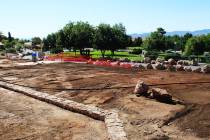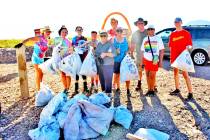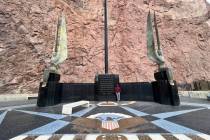Effect of proposed residential water caps
There is still a lot of uncertainty about exactly how the acknowledged crisis in the Colorado River generally and Lake Mead in particular will end up affecting residents. But the smart money is on more restrictions if the level of the lake, as is currently expected, continues to drop.
A hint of what may lie in the near future came last week as the Assembly Committee on Natural Resources in Carson City passed Assembly Bill 220 out of committee. It is now headed to the full Assembly for a vote.
If passed, the bill would give the Southern Nevada Water Authority the ability to cap residential water use during a federally declared water shortage in the Colorado River. As currently written, the bill would allow SNWA to limit residential users to no more than half of an acre-foot per year (about 163,000 gallons).
Officials at SNWA have been using residential use in the Las Vegas Valley as their gauge when explaining how this might affect users, noting that 80 percent of users “over the hill” fall below the proposed restrictions.
Does that same percentage hold true in Boulder City?
City officials checked and, while the information is not complete, it appears that only about 3 percent of water accounts in Boulder City use more than 163,000 gallons of water per year. City officials are currently determining how many of those accounts are residential.
Another part of the proposed bill that might affect some residents is a requirement that thousands of homes currently using septic systems connect to a municipal sewer system. In most parts of Southern Nevada, water that goes through a sewer system is treated and sent back to Lake Mead which results in water usage credits for the region. (See the accompanying story on page 6 for an explanation of how those credits work and how much water Southern Nevada currently has “banked” due to those credits.)
An amendment to AB 220 would increase the rebate available to homeowners for such a conversion from 50 percent to 85 percent.















